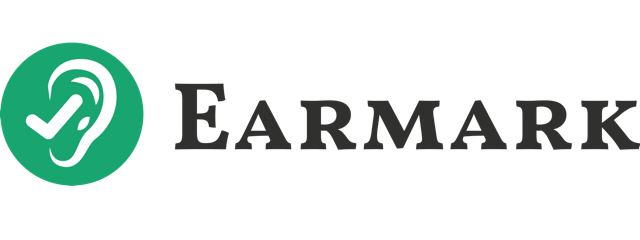When two team members announce overlapping maternity leaves, many firms would anticipate a major disruption. But when that scenario played out at Dillon Business Advisors, something remarkable happened: team efficiency improved, profitability rose, and the firm discovered innovative ways to serve its clients.
In a recent episode of the Who’s Really the Boss podcast, Lezlie Reeves, Fractional CFO at Dillon Business Advisors, discussed with hosts Rachel and Marcus Dillon how the firm transformed what could have been a significant operational challenge into a catalyst for growth. With a team of 15 employees serving numerous clients, extended employee leaves often spell strained client relationships and overwhelmed staff—issues many CPA firm owners know all too well.
Yet through methodical documentation, systematic training, and strategic role delegation, Dillon Business Advisors didn’t just maintain their service levels—they raised them. Their experience offers valuable lessons for any firm looking to build more resilient teams and sustainable growth.
Building the Foundation: Systematic Documentation
Before team members announced their leaves, Dillon Business Advisors had already laid the essential groundwork. They recognized a common issue in accounting firms: too much vital knowledge residing in employees’ heads.
“Many of our CSMs do such a great job, but a lot of things would live in their head,” explains Lezlie. “If they needed to be out or someone left unexpectedly, they were not covered.”
Their solution was straightforward: using Excel templates and Vimeo recordings, the team documented every client’s comprehensive workflow—from daily tasks and weekly responsibilities to monthly financial preparation and client contact details. Rather than creating more administrative burdens, they integrated documentation into normal processes: recording videos during actual client work and updating Excel templates in real-time.
The team had previously solved for password management by implementing Practice Protect, ensuring secure access to client systems wouldn’t become a bottleneck during employee absences and exits.
This foundation of systematic documentation paid off when employees announced their leaves. Instead of scrambling to capture processes and procedures, the firm focused on strategic preparation and training. It’s a powerful reminder that the best time to document critical workflows is before you need them.
Methodical Training: The Key to Seamless Transitions
With documentation in place, Dillon Business Advisors turned their attention to training team members over six to eight months.
The training began with basic daily tasks before progressing to specific client work. To avoid overwhelming both the trainers and the trainee, they introduced five clients at a time. This paced approach allowed the CSM Assistants to gain confidence with one cluster of clients before moving on.
“If you’ve ever trained someone, you know it is exhausting to train while you’re working,” Lezlie says.
To address this, the firm distributed training responsibilities across multiple team members instead of burdening a single trainer with 40 hours of instruction. Each group of clients followed a three-month progression:
1. Month One: The CSM Assistant shadowed the CSM.
2. Month Two: The CSM Assistant handled the work with the CSM shadowing.
3. Month Three: The CSM Assistant worked independently with support available.
By the time employees went on leave, their replacements were fully prepared and confident—a stark contrast to common last-minute handovers.
From Disruption to Opportunity: Strategic Role Distribution and Unexpected Benefits
Rather than assigning all responsibilities to controllers, Dillon Business Advisors strategically divided tasks. The CSM Assistant handled bank feeds, reconciliations, journal entries, and financial preparation, while controllers managed client communication, tax filings, and payroll. This balance prevented any team member from becoming overloaded and ensured critical deadlines were met.
An unexpected bonus soon emerged.
“One added benefit we’ve had is with the client service manager assistant and the controller stepping in on different tasks—they’re just putting a different set of eyes on things,” Lezlie notes. “They can reevaluate, maybe trying new ways of doing things.”
These fresh perspectives resulted in process improvements across multiple clients. Team efficiency grew, and rather than seeing a dip in profits during the leave periods, the firm saw an increase in profitability. When the team members returned from leave, they even requested to continue assistant support because it had enhanced their ability to serve clients effectively.
What began as a workaround for extended leave transformed into a sustainable model for growth, enabling the firm to create capacity without hiring more full-time CSMs. This led to more efficient workflows and improved profitability overall.
Turning Challenge into Opportunity
What started as leave preparation became a catalyst for enduring change at Dillon Business Advisors. Through systematic documentation, methodical training, and strategic role delegation, they not only maintained client service—but improved it.
By viewing extended leave not as an unavoidable disruption but as an opportunity for growth, accounting firms can build more resilient teams, streamline workflows, and create new paths for expansion.
Want to learn more about how Dillon Business Advisors transformed their approach to employee leave management? Listen to the full episode of the Who’s Really the Boss podcast for deeper insights and practical tips you can implement in your firm.
Rachel and Marcus Dillon, CPA, own a Texas-based, remote client accounting and advisory services firm, Dillon Business Advisors, with a team of 15 professionals. Their latest organization, Collective by DBA, supports and guides accounting firm owners and leaders with firm resources, education, and operational strategy through community, groups, and one-on-one advisory.
